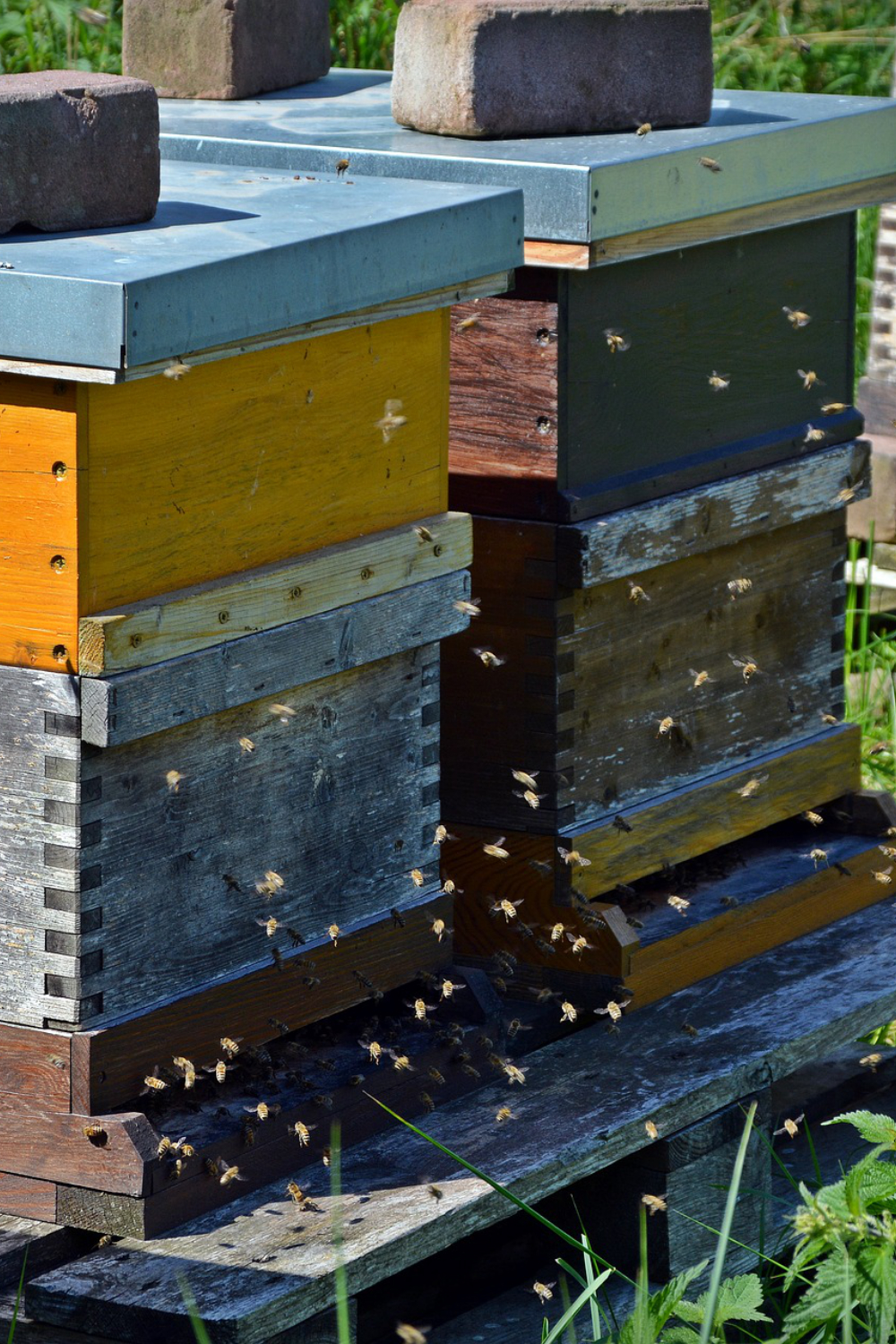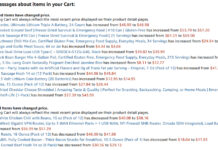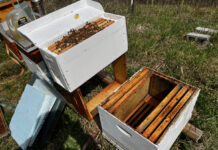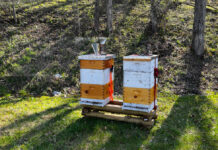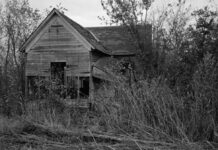The Best Times to Feed Your Bees
At the bare minimum, you should feed your bees to prevent starvation. This can be done proactively, to help the hive store up honey, or reactively, when a hive inspection shows little available food and the bees are hungry.
Feeding helps bees draw comb and prepares the hive for a nectar flow.
I consider feeding at these four times:
When Your Bees Arrive
When you receive a package of bees or a nuc, it is important to make a 1-to-1 solution of sugar and water available to your bees immediately upon adding them to your hive. The bees may arrive hungry and will have no (in the case of a package) or limited (in the case of a nuc) food stores upon which to draw.
The queen cannot lay eggs unless there is drawn comb ready for her, so feeding a package of bees gives them the added boost they need to rapidly draw comb. Bees must consume about 9 pounds of nectar or honey to make one pound of comb, so feeding plenty of syrup will help them fill your foundation with comb and strengthen the hive.
If there is no pollen available naturally when your new bees arrive, feeding a pollen patty will help stimulate brood building. Alternatively, you can make pollen powder available outside the hive if it is warm enough for them to leave the hive.
At the End of the Season
After you have removed the last honey super, I recommend feeding the heavy syrup to help ensure your bees have sufficient stores to last them through the winter. You want them to fill as much comb with honey as possible.
You can visually inspect your brood boxes to determine how many frames of honey and pollen your bees have, or you can lift the hive body. With experience, you will be able to judge how a hive is doing by its weight.
Late Winter/Early Spring
Your bees will hunker down for the winter, and special fat winter bees are born to help keep the queen warm and alive. They cluster into a large ball at the center of the hive and use their combined body heat to fight off the winter chill. During this period, they will rely on their stored food to feed the hive.
Bees rarely leave the hive during cold weather. On the first few warm days you may see bees flying even if there is no nectar or pollen available. This is because the bees are fastidious and will not defecate inside the hive. They will fly outside to relieve themselves when the air warms up.
Winter is Tough on Bees
Winter is when weak bee hives die. While there can be multiple contributing factors, starvation is a leading cause and feeding fondant or bee candy can help prevent starvation. (Proper mite control prior to winter is another good way to help prevent winter deaths.)
Sometime after the winter solstice, the queen will start laying again in anticipation of warming weather and blooming plants. Depending on where you live, how long the winters last, and what blooms when, the time to start feeding will vary. I recommend you start feeding bee patties a month or so before the first significant nectar flow. This will help the hive rear brood and have plenty of fresh, spring bees to take care of the new eggs the queen is laying and to forage for new pollen and honey. As the younger workers are born and the older winter bees die off, your hive will be ready to start its annual cycle again. Ideally, you will start your second year earlier and with a stronger hive than you had with your original nuc or package. That means the hives second year should have a much stronger honey flow.
You need to be cautious not to feed too soon or you will have thousands of new bees and no natural food source. If there is a cold snap or spring blooms are delayed, then you may have to feed sugar water or fondant as well to keep these new bees alive until they can find natural sustenance.
During a Dearth
Depending on the environment and geographic region where your hive is located, there may be times during the summer when little or no natural feed is available for your bees. This is often the case during hot, dry summer months. These periods are known a “dearths” because there is a dearth of nectar. You can help your bees out by feeding syrup and/or pollen powder during a dearth.
One of the many great things about bees is that they are discerning. During a heavy nectar flow, they will largely ignore your sugar syrup and harvest wild nectar instead. They will also choose natural pollen over pollen substitutes. By monitoring how much food they are consuming, you can determine when you need to feed more and when you can cease your efforts. New beekeepers should track how much sugar water is consumed and identify the time period of the dearths. This knowledge will be valuable for hive management in future years.
Of all times to feed your bees, during a dearth is probably the least important. Chances are excellent that your bees will survive a dearth without supplemental feed, but the hive will be stronger and able to harvest more honey after the dearth if you feed them during the dearth.
If a bee colony starts to run low on food, especially bee bread, they will cannibalize the larva to provide protein for the hive. This will result in fewer bees being born and a smaller colony. I feel it is in your best interest as a beekeeper to have a strong hive so that you can harvest the most honey.
